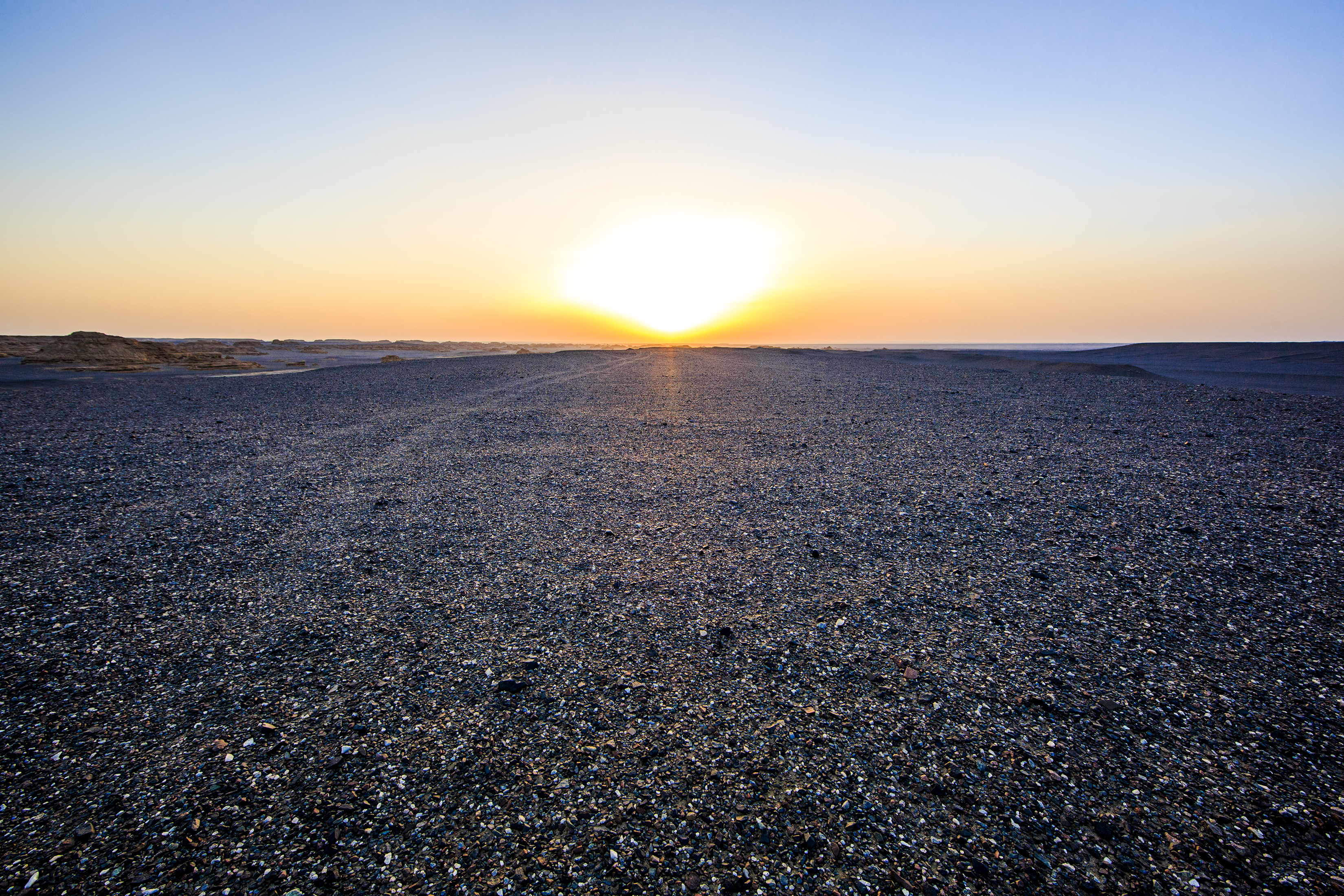In Mongolian, Gobi refers to a gravel desert where vegetation is scarce. These deserts are often formed through wind erosion and are typically found in arid basins or at the edges of valleys. Due to the forceful effects of wind erosion, the small particles of sand situated on the surface of alluvial-proluvial plains, alluvial-proluvial fans, or alluvial fans are carried away, which leaves behind large chunks of gravel on solid ground. This process creates a level Gobi topography that is characterized by expansive areas of gravel. Only a few alkali-tolerant grasses and shrubs grow sparsely on the Gobi desert. In China, Gobi deserts are distributed in northwest Inner Mongolia, Tarim and Junggar in Xinjiang, and the Qaidam Basin in Qinghai.
The Black Gobi is situated on the northern periphery of the Dunhuang Basin, adjacent to the Kumtag Desert, and has a dry climate. Following the desiccation of the ancient Lop Nur, the torrents from Beishan and rivers like the Shule River gave rise to proluvial and alluvial-proluvial fans in this region. The relentless wind erosion and blowing resulted in a dark gravel layer on the Gobi's surface, creating the renowned geomorphologic landscape of Black Gobi.

 简体中文
简体中文
